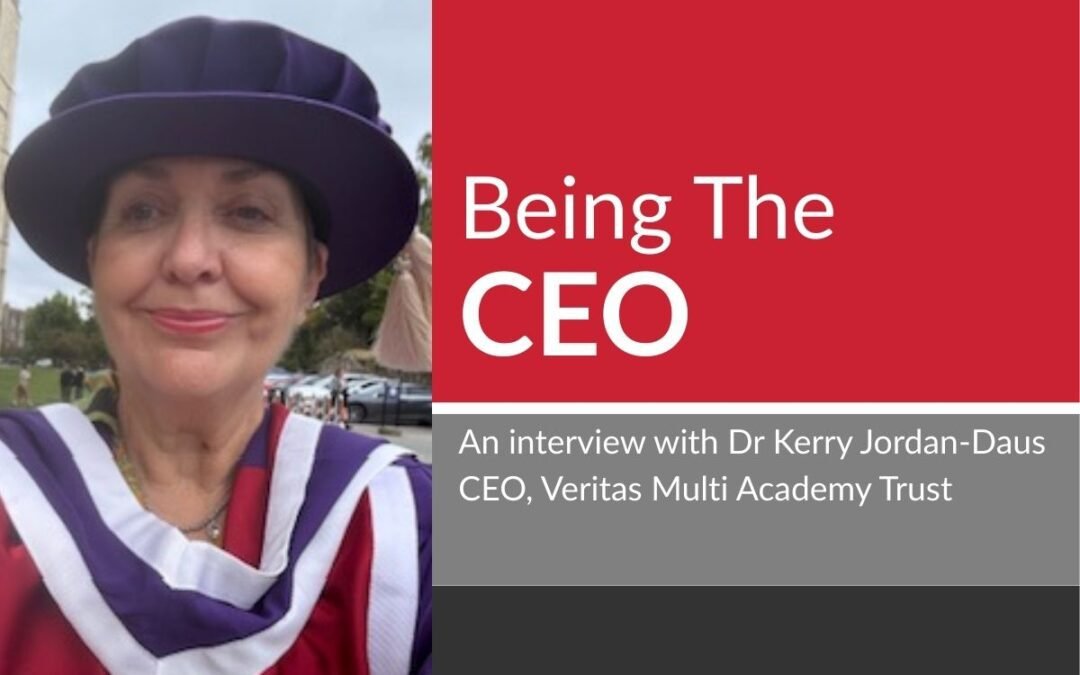In a complex and uncertain world, leading an organisation has never been more challenging and demanding. Yet, says Rachael Gacs, great CEOs know that the key to success lies in a culture that draws on the real-time knowledge and experience of those on the frontline. So, how does a CEO make that happen?

“When we work alongside others, our collective powers are extended way beyond anything that one fragile being could ever accomplish… the team is far stronger, wiser, more intelligent, and more capable”
Alain de Botton, Founder of The School of Life
Great leaders are humble enough, and realistic enough, to recognise that they are not the fount of all knowledge. Brilliant ideas can be (and frequently are) generated at every level of an organisation, drawing on the wide range of experiences and perceptions of how an organisation is functioning and meeting the needs of those on the frontline. For this reason, it must be a priority for CEOs to create the routines and conditions that continually capture the feedback, ideas and opinions of colleagues, exploring new ways through which organisations and their executives can learn from people at all levels. Wisdom, as they say, lies within the crowd.
The benefits of staying open and receptive to the needs and ideas of your staff are vast. From increasing levels of motivation and staff satisfaction, to attracting and retaining high calibre employees, being in tune with your people is a key part of optimising the success of your organisation. In fact, a recent study has discovered that when an employee feels heard, that person is 4.6 times more likely to feel empowered to perform to the best of their abilities[1], demonstrating that the importance of listening to your staff cannot be overstated!
So what are some of the best ways that you, as a CEO, can ensure that you stay in tune with what your staff are thinking and feeling, and how can you use this information to foster continual improvement across your trust?
Approachable and accessible leadership
‘Most of the successful people I’ve known are the ones who do more listening than talking”
Bernard Baruch
Visible, approachable, and accessible leadership is the fundamental foundation that enables fruitful communication with your staff. This requires groundwork – building a relationship of trust with colleagues across your organisation over time. This can be done by connecting with staff members regularly; asking questions, listening carefully to responses, showing interest, absorbing their concerns and insights, and most importantly of all, demonstrating that you care. You will also need to regularly remind staff that your door is always open. The era of zooms and teams has widened the opportunities for CEOs to create forums of staff, giving leaders a chance to connect with and listen to staff across wide geographical areas at the click of a button.
When your staff feel that they can speak to you freely and confidentially, (and if you ask the right questions) you will gain invaluable insight into what is happening at every level of your organisation. This greater depth of understanding will, in turn, help you to recognise what needs to be adjusted in order to drive improvement.
Suggestion Boxes, and actively seeking out opportunities to learn from colleagues
“Any organisation that says it wants to get better all the time, but which does not have a vibrant, successful suggestion scheme, is wasting its time.”
Julian Richer, CEO of Richer Sounds
Every person you employ has a unique expertise and insight into their own area of work, and every single one of them has the potential to generate fantastic ideas. But unless you create an intentional system that makes it as easy as possible for your staff to share their ideas with you, you may never hear about them, and consequently, opportunities will be missed. This is why your organisation needs an effective suggestion scheme.
The logistics are straight forward enough; provide all employees with a booklet of blank suggestion slips, regularly and actively encourage staff to fill these in, and provide a suggestion box which is easily accessible. However, this will not be enough on its own. Bear in mind that this approach will only be successful if suggestions are taken seriously, engaged with by you personally as the CEO, and are followed up on. Even untenable suggestions should be acknowledged with a thank you and a brief response. And, for the scheme to have credibility in the long term, the best suggestions must be put into practice.
Suggestion boxes – physical or virtual – are a great way to encourage innovation, to support continual improvement, to help secure buy-in from staff, and to keep your organisation moving forward all the time.
Psychological Safety
“Have no fear of perfection; you’ll never reach it”
Marie Curie
Psychological Safety is intertwined with the culture you build across your trust. That culture needs to be one where staff can express their ideas, and test them; where they can take managed risks, and make mistakes, without fear of the consequences. Without psychological safety, organisations stagnate; people become too afraid to be innovative or creative for fear of failure – so they stay in their comfort zones. And very little that is remarkable comes from people who stay in their comfort zones.
As a leader then, you should encourage staff to share different ideas and try new things that can be justified against your wider organisational goals and values. You can do this by enabling, acknowledging and celebrating disciplined creativity and innovation, and by making sure that you take the time to applaud every successful new project or approach. Even more importantly, your staff need to know that you will understand and support them if things don’t go as planned, or if their new initiative fails. Without this assurance, or if you don’t put this approach into practice, most staff will inevitably retreat to their comfort zones once more, and progress will be stifled. As difficult as it can be at times, try to view failures as an inevitable part of the learning process, in just the same way as your pupils are encouraged to do in the classroom.
Staff Surveys
“I believe in accessibility. I believe in honesty and a culture that supports that. And you can’t have that if you’re not open to receiving feedback”
Mindy Grossman, CEO, Weight Watchers
Staff surveys remain the most effective tool that leaders have in their toolbox to stay in tune with what their staff are thinking and feeling. However, staff surveys will provide you will different outcomes depending on how you approach them, and how you use the results. They can be used simply to ‘gauge the temperature’, or they can be used to instigate real change. So how can you ensure the latter?
- Set time aside specifically for staff to complete the survey – this will produce a larger response rate, and the more people who participate in the survey, the more meaningful it is.
- Anonymity – the results of a survey won’t mean much unless you know that your staff are free to be totally honest, and that will only happen if they know that their answers will remain anonymous.
- Act on the results – there is little point in staff surveys unless the feedback gained is used to drive improvement. Responses will need to be analysed and carefully reflected upon, and a summary of the results should also be shared with staff. Any actions planned in response to feedback should also be shared, and staff should be kept updated on the progress of these actions.
- Use surveys to measure progress, year on year – the first year you use a staff survey, you are gaining information which you can then use as a benchmark. From then on, you will know if your organisation is making progress in response to staff feedback, if that feedback improves over time. If you ever find that feedback is worse than it was the previous year, that is valuable information; it will alert you to problems within the organisation, which you can then work to solve before they escalate.
A healthy organisation feeds on ideas, suggestions, comments, and criticisms. That’s why it is vital as CEO that you ensure long-term engagement with the systems and processes which enable you to listen to – and learn from – your people, and embed them so that they become an organisational habit, rather than a ‘flash in the pan’.
Share with us the ways that you are putting listening to staff into practice: Contact | Forum Strategy
Liked this article? Why not become a member of Forum Strategy’s National CEO or COO network and access many more via our new membership website, together with a whole range of member benefits and resources: Our Networks
Rachael Gacs is Communications and Resources Manager at Forum Strategy and the editor of #TrustLeaders Magazine. You can read her previous article on CEOs and the importance of goal setting, here: Being The CEO: The importance of goals

[1] Employees Who Feel Heard Are 4.6x More Likely to Feel Empowered to Do Their Best Work | Inc.com

